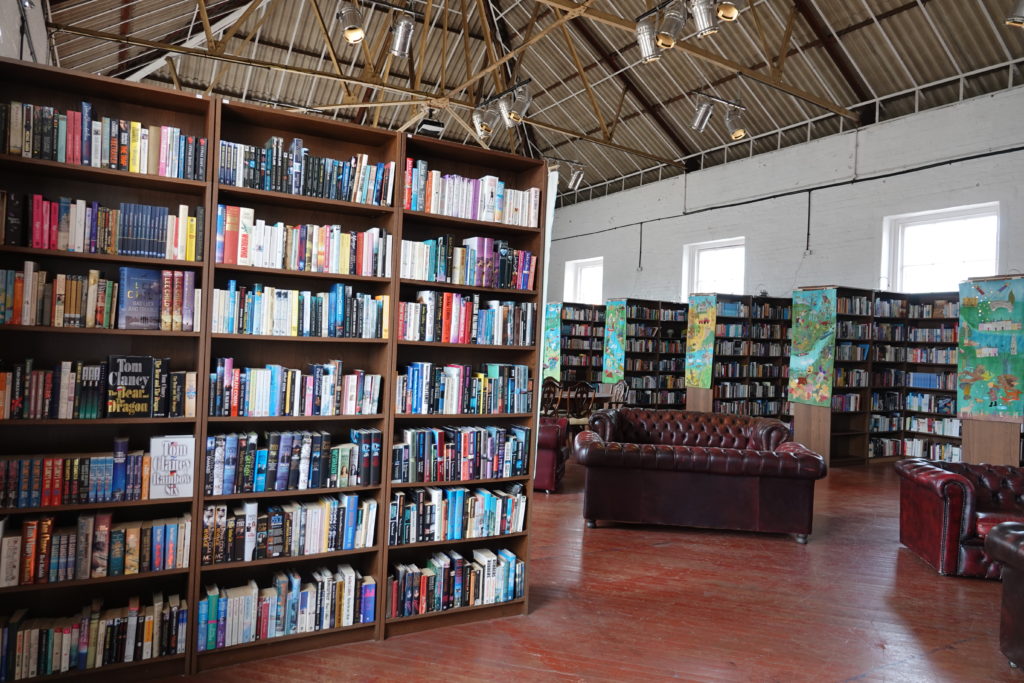Geese and Gunpowder
While much of the country is to this day threatened by pestilential waterfowl, one village has been living in an uneasy truce with them since the 7th century. Weedon Bec was suffering from a plague of geese, eating all the crops in the fields.
Q: Who you gonna call?
A: Geesebusters!
That was pretty funny in the 7th century, trust me.
Actually they called in Saint Werburgh, another one of those Saxon princesses turned nun who littered the dark ages with their sanctity. She gave the geese a good talking to. Here she is in a stained glass window in the local church.
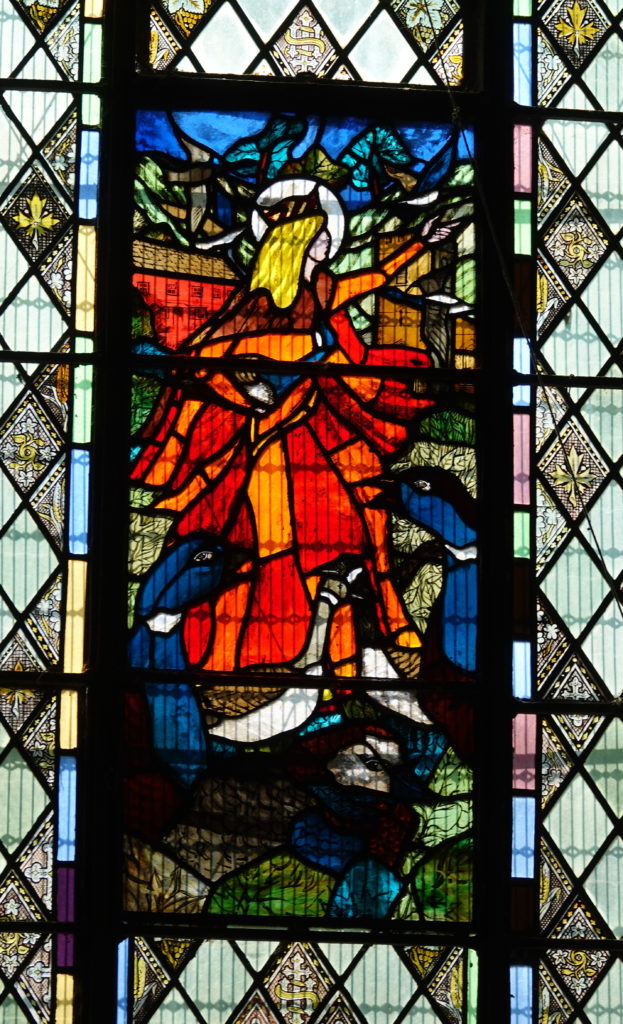
You’ll notice she’s wearing a crown and a halo because she’s a saint and a princess. It must have been a nightmare for her hairdresser.
The geese paid attention to her and were about to move off to menace Nether Heyford or Bugbrooke, when one of Werburgh’s saintly servants fancied a roast goose dinner. He killed and ate one of the fowl leaving only bones. The geese were horrified and complained bitterly to the saint. Here she is on a signpost in town, still wearing her crown and halo, but looking a little less demure because low flying geese are about to crap on her.
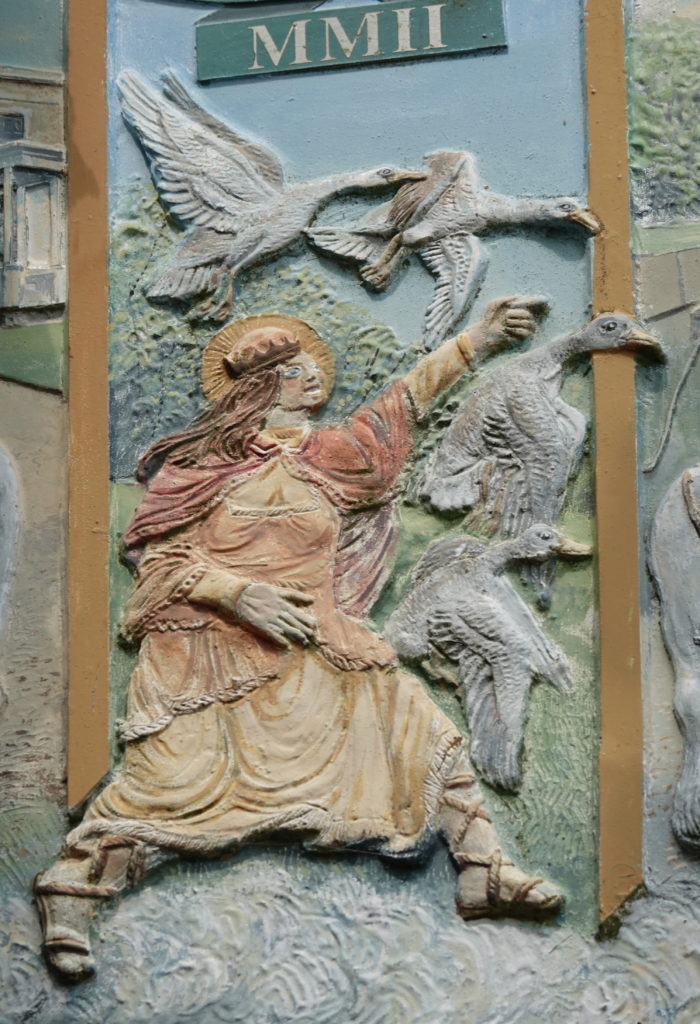
If she had any sense it would have been roast goose for the entire village, but no. She took the goose bones and brought the goose back to life. The flock was so impressed by this goose resurrection that they have not bothered Weedon Bec ever since.
Just in case they do come back, though, there is a metal goose impaled on a spit on top of the church tower as a reminder of what may happen to them.

Weedon Bec also has one of the nicest thatched roofs we’ve seen…
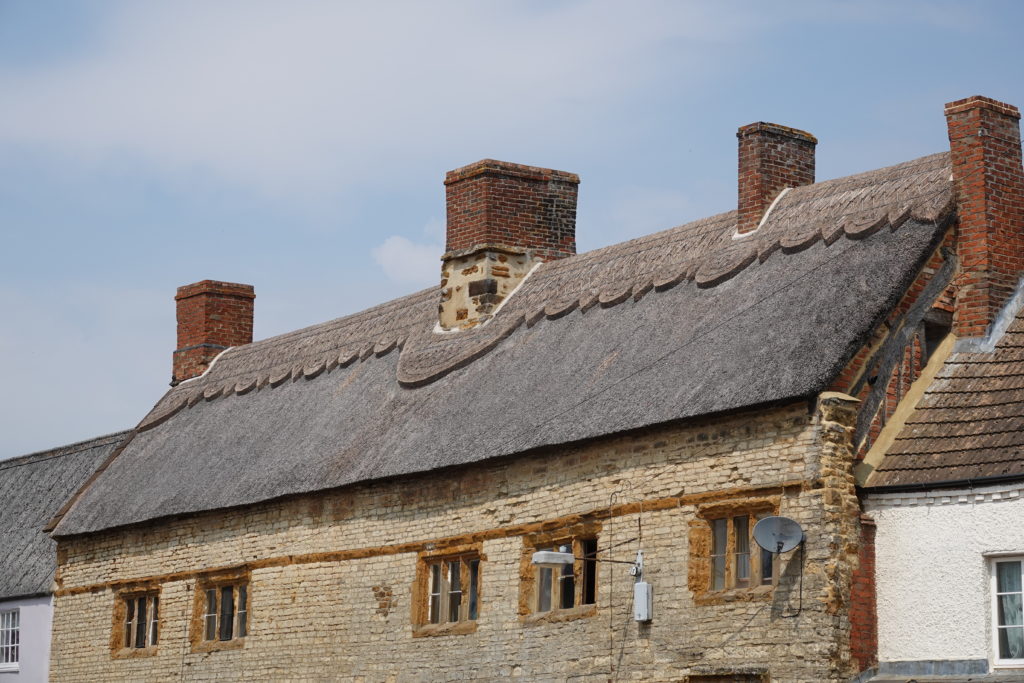
… and a building ornamented with a constipated dragon.

However, the pride of place must go to what is probably the only military base in the world with a private canal.
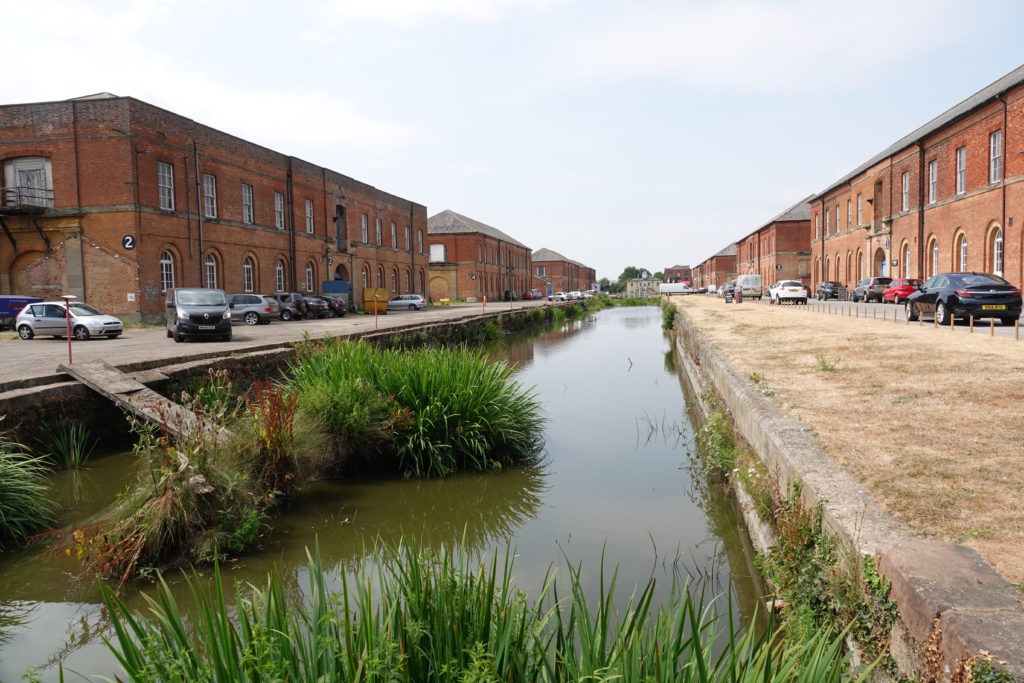
In 1812, at the height of the Napoleonic Wars, the geniuses in the War Office worked out that Most of Britain’s weaponry was stored close enough to the coast that there was danger of Napoleon capturing it in the event of a successful invasion. They decided they needed a place to weaponry and ammunition that was safe from immediate capture, but well enough connected to the rest of the country that weapons could be moved where they were needed. The result was the Royal Ordinance Depot at Weedon Bec. As well as a private arm of the Grand Union canal, it later also had a private branch railway, and it was close to the main road to London, too.
As well as weapons and explosives, uniforms and boots were stored there, and from 1922 it was used to train the cavalry to ride horses. (Never let it be said that the British Army can’t deal with technological changes.) In 1965 it was decommissioned, and the buildings are now used for a variety of industrial and retail uses including antiques, an art gallery, and a bookstore.
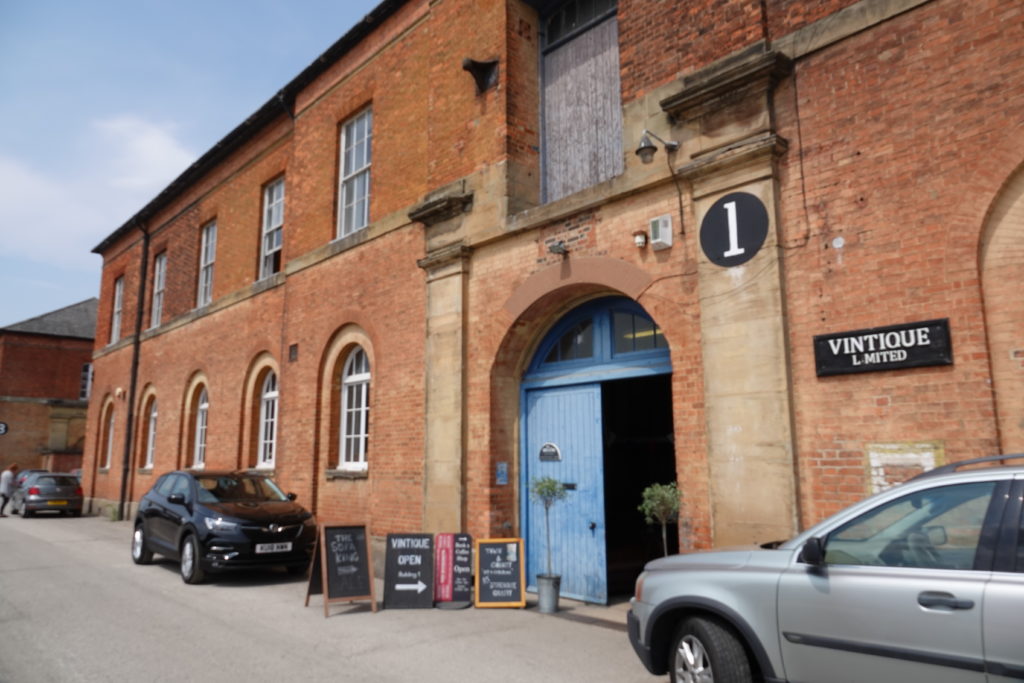
After lunch in Weedon Bec we continued to the little village of Muscott, where a Victorian model farm has been converted into a shopping mall. It’s pretty surreal, because there you are out in the country surrounded by sun-browned fields, and suddenly there are dozens of shops selling mugs, cards, and fridge magnets and all of them are about drinking Prosecco.
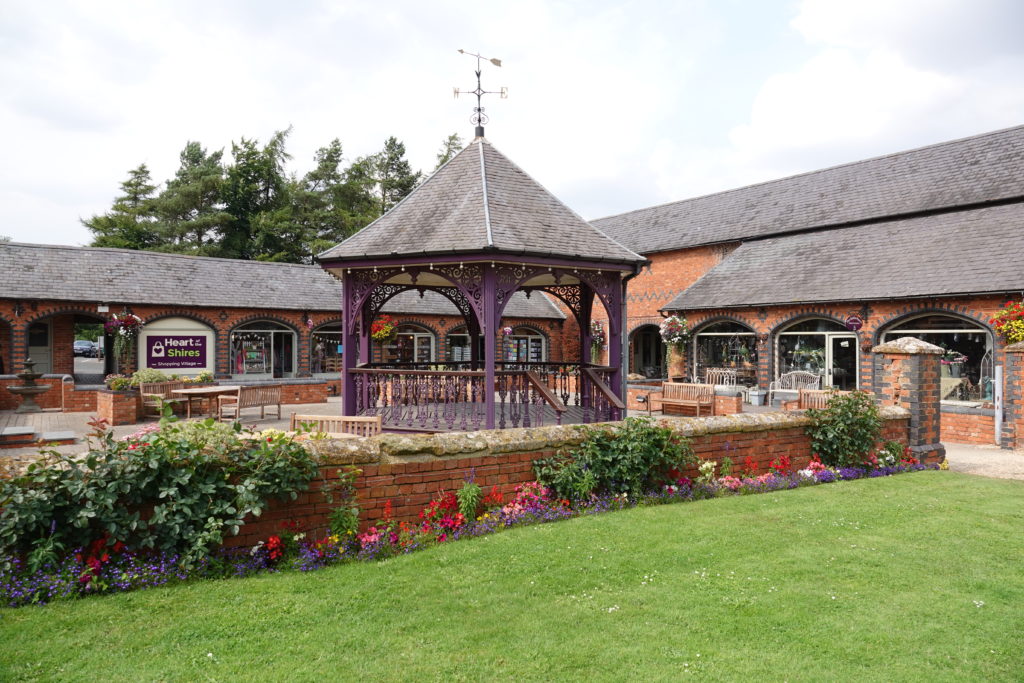
Actually, I’m exaggerating. Some of them are about drinking gin.
